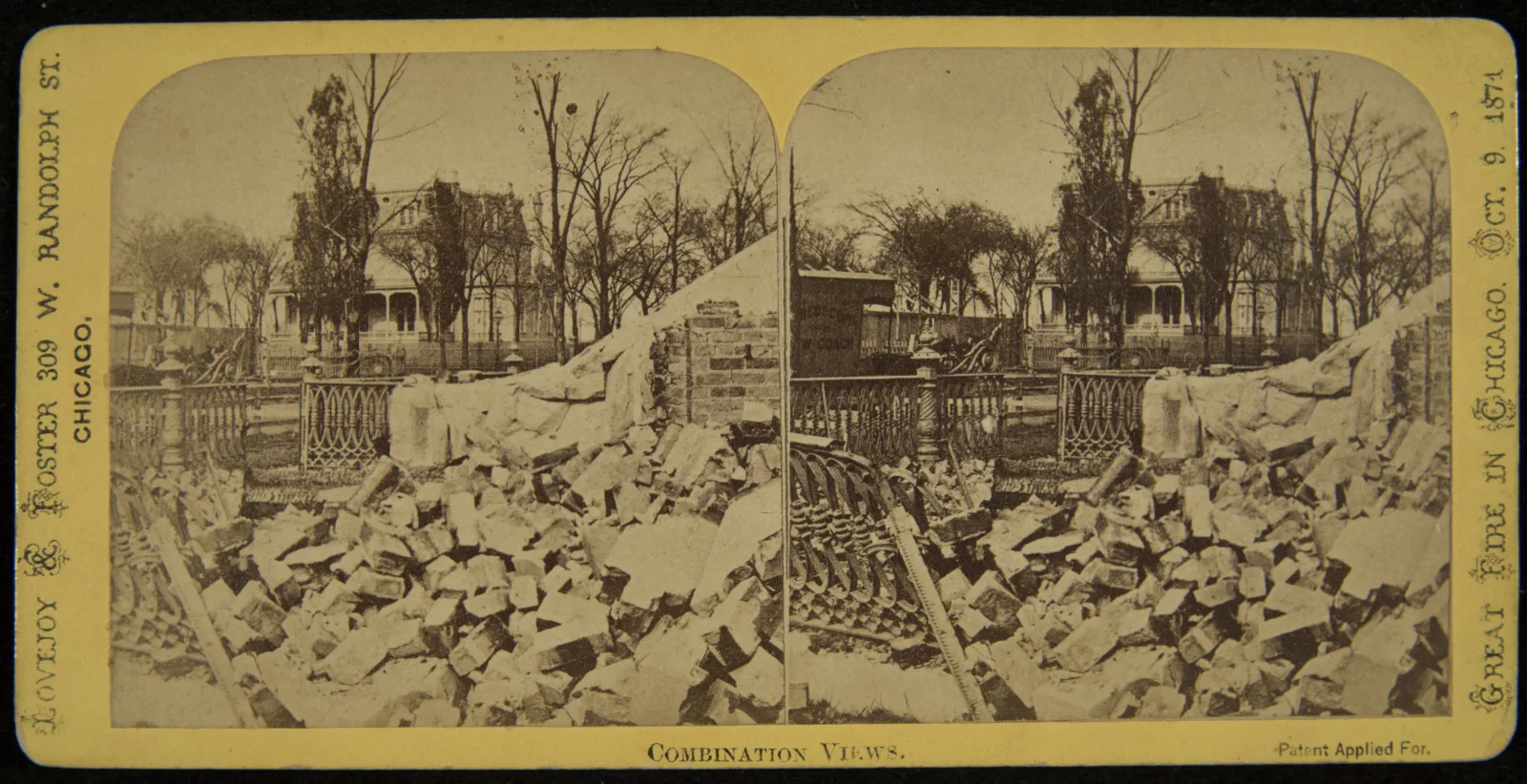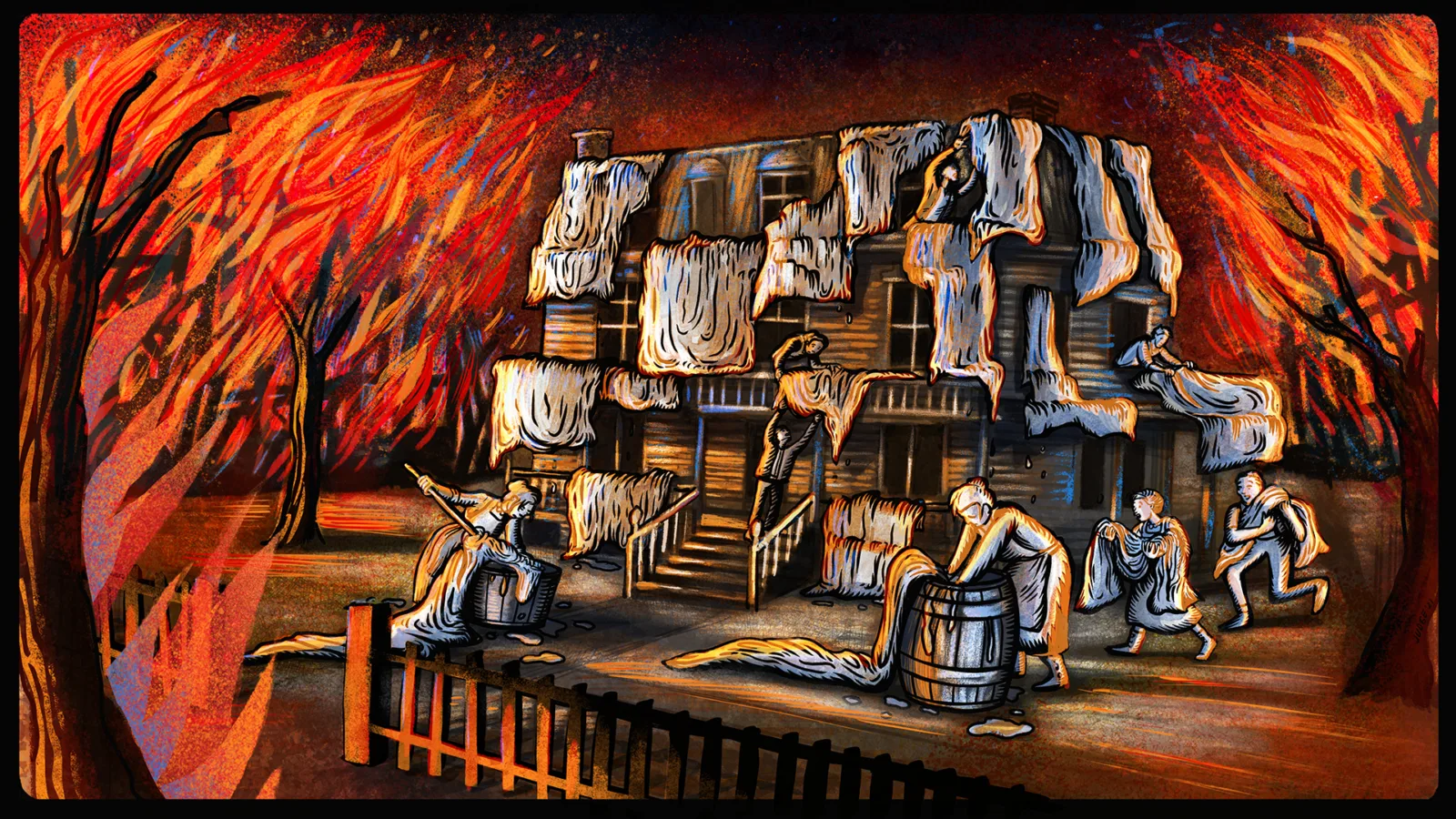When many Chicagoans awoke on the morning of October 9, 1893, they looked forward to traveling to Jackson Park later that day to take part in the “Chicago Day” festivities at the World’s Columbian Exposition. Before heading to the fair to commemorate the 22nd anniversary of the Chicago Fire, people opened their edition of the Chicago Tribune to see a “faithful illustration…of the most interesting relic of the great fire” of October 8-10, 1871.
That relic was the house that had belonged to Mahlon D. Ogden, “which alone among so many thousand buildings survived the great catastrophe.”

One thing readers of the newspaper couldn’t do was visit the Ogden House itself. As the article made clear, the “site of the mansion is now occupied by the magnificent new Newberry Library Building.”
The Ogden House wasn’t, as the article claimed, “alone” among survivors of the Great Chicago Fire. Large portions of the South and West sides of the city had been outside the fire’s path. Even within the burn zone, which extended north and east from roughly Roosevelt to Fullerton today, encompassing Chicago’s Loop and North side, around a dozen buildings survived.

What made the Ogden House remarkable is that it was one of the only private homes to withstand the catastrophe—an outcome all the more miraculous because the house was made of wood.
Mahlon D. Ogden was sixty at the time of the fire and lived with his second wife and three children. He was an attorney, but, like many men of his moment and station, dabbled in real estate and railroads. These were interests he shared with this brother, William Butler, the first Mayor of Chicago and the person after whom schools and an avenue is named.
The Mahlon Ogdens weren’t at their home when the fire started on the evening of October 8, 1871. The task of saving the house fell to some family friends who were staying there and, presumably, the servants.
The house’s location helped. It stood just north of Washington Square Park, where the open space acted as a firebreak and offered time to form a response. Those in the Ogden House took every scrap of cloth—bed linens, curtains, carpets, and rugs—soaked them in water from the well in back of the home and, when the well went dry, purportedly turned to the barrels of cider in the cellar. They swaddled the house and waited.

By some miracle, no stray spark or flying piece of burning debris so much as touched the house. By the next evening, rain had fallen, and the Great Chicago Fire began to go out. Close to 18,000 buildings were no more. More than 100,000 people out of a population of a little over 300,000 no longer had a home. The Ogden House and the Ogdens were lucky.
As Chicago rebuilt, the Ogden House became a popular destination for tourists. The water works, to the east, had been destroyed in the fire but were rebuilt, and the water tower became a symbol of the city’s resilience, as one by one the other survivors of the Great Chicago Fire were torn down.
Eventually, the Ogden family lost ownership of the land upon which the house stood, and it too was replaced, as the article from October 1893 noted, by what would become another Chicago landmark, the Newberry Library.
About the Author
Paul Durica is the former Director of Exhibitions at the Newberry.